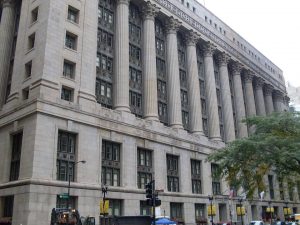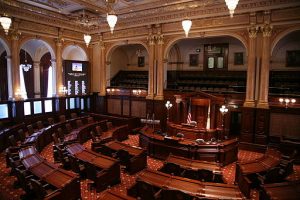Sen. Richard Durbin introduced new legislation Monday, Jan. 23, that will modify the GI Bill, after criticizing for-profit colleges and saying their recruitment of military veterans was too aggressive.
Challenging the 90-10 rule, which bans for-profit colleges and universities from obtaining more than 90 percent of their revenue from the Department of Education’s federal student aid program, Durbin proposed to change the rule to 85-15.
The new Post 9/11 GI Bill gives educational benefits up to 36 months to those who qualify. Veterans serving after Sept. 10, 2001, for at least 90 days will receive 40 percent of their tuition paid by the VA; those who serve for up to 36 months are able to obtain 100 percent of their tuition costs.
Durbin spoke before a panel of experts and military veterans who obtained loans to attend for-profit colleges and are now struggling to pay back their debt.
Veteran Bernetta Garrett, who served eight years in the military, said she has more than $100,000 in college debt. Garrett, who has two daughters and is a single mother, testified that she thought by getting her two degrees she would be able to give her daughters “a better life.”
Garrett said she has debated whether to pay the $800 a month due for her loans or maintain a roof over her family’s head and food on the table. She ended her testimony by saying she hopes future veterans “will not have to struggle as much as I have.”
But others have publicly defended for-profit colleges. Penny Lee, managing director of the Coalition for Educational Success, a for-profit industry trade group, spoke recently to the Huffington Post. She pointed to the favorable statistics on graduation rates for short-term degree programs. Several studies have shown that students who attend for-profits are more likely to complete work to earn an associate’s degree or professional certificate than those who are working toward a four-year degree.
Lee also cited a recent Government Accountability Office report that found for-profit students had similar earnings to students from other sectors of higher education.
“Particularly in these difficult economic times, we believe all institutions of higher education, regardless of a school’s tax status, should be focused on offering students an education that makes them ‘job ready’ and puts them on the pathway toward a career,” Lee said in a statement.
Sergeant Chris Pantzke, victim of PTSD and a serious brain injury while in Iraq, said he was a target of aggressive marketing from a for-profit college when he decided to go to the Art Institute of Pittsburgh. Pantzke testified that he fell for the “sales pitch” by the for-profit school, but by then it was too late to do anything about it.
“I already had taken out the loans, which was roughly $26,000,” said Pantze. During his time at the for-profit college, he had difficulty receiving the assistance he needed with his classes. He was unable to get his degree and dropped out. He has since been unable to find a job in photography, which is what he studied at the Art Institute.
A Senate committee report noted that between 2006 and 2010, roughly 20 for-profit colleges saw their education benefits from the Veteran’s Administration and the Department of Defense increase by 683 percent, that’s more than $500 million.
Stifel Nicolaus, an investment bank, recently published an analysis about the University of Phoenix, America’s largest private university and the largest military-student and veteran market of for-profit colleges. The report said federal grants and loans account for about 88 percent of the university’s revenue.
Durbin said for-profit colleges received $29 billion from the federal government from 2005 to 2009 to pay for veterans’ tuition.
His proposed legislation is being co-sponsored by Rep. Steve Cohen (D-Tenn.), Sen. Al Franken (D-Minn.) and Sen. Tom Harkin (D-Iowa).
Durbin closed his testimony by stating students and veterans are “signing up for a lifetime of debt.”













Be First to Comment